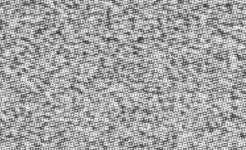- Messages
- 86
- Name
- Peter
- Edit My Images
- No
So I've been reading through photographer Stanley Greene's Chechnyan War book Open Wound I purchased recently. I've been pretty blown away about not just the content of the photos, but the actual "look" of them too. I scanned part of one of the photos at 9600dpi. This image is an extreme close up of the grain structure (I think?) from the same scan.
Does anyone know what film this is and how you would achieve this sort of look from shooting / developing? They are incredibly grainy yet still highly detailed and sharp. In the book it says he used Leica M6, Leica glass, Kodak Tri-X 400, Kodak T-max 3200.
If anyone has any ideas I'd love to hear them. Thanks.

^extreme close up of the "grain" in photo
Does anyone know what film this is and how you would achieve this sort of look from shooting / developing? They are incredibly grainy yet still highly detailed and sharp. In the book it says he used Leica M6, Leica glass, Kodak Tri-X 400, Kodak T-max 3200.
If anyone has any ideas I'd love to hear them. Thanks.

^extreme close up of the "grain" in photo
Last edited:
